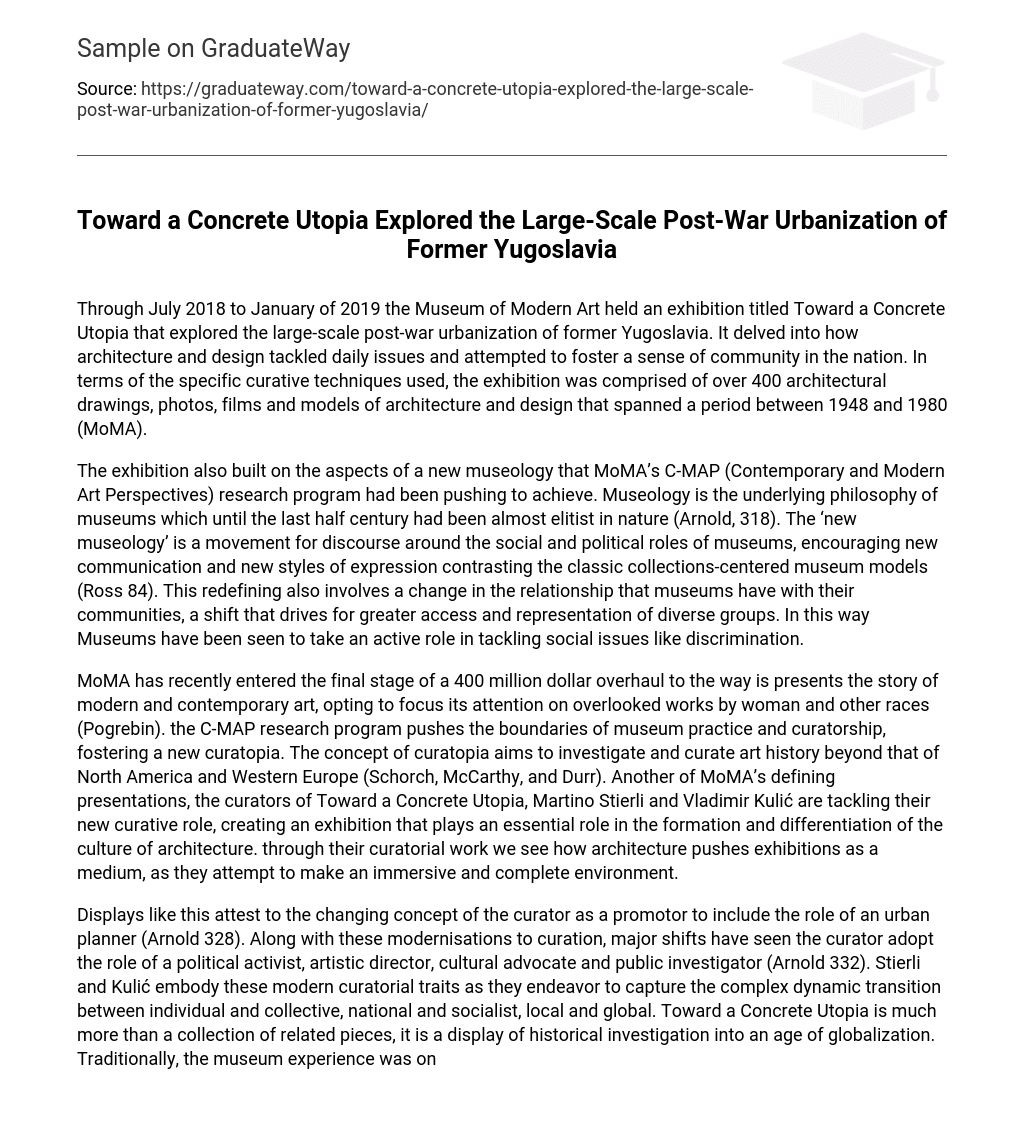Through July 2018 to January of 2019 the Museum of Modern Art held an exhibition titled Toward a Concrete Utopia that explored the large-scale post-war urbanization of former Yugoslavia. It delved into how architecture and design tackled daily issues and attempted to foster a sense of community in the nation. In terms of the specific curative techniques used, the exhibition was comprised of over 400 architectural drawings, photos, films and models of architecture and design that spanned a period between 1948 and 1980 (MoMA).
The exhibition also built on the aspects of a new museology that MoMA’s C-MAP (Contemporary and Modern Art Perspectives) research program had been pushing to achieve. Museology is the underlying philosophy of museums which until the last half century had been almost elitist in nature (Arnold, 318). The ‘new museology’ is a movement for discourse around the social and political roles of museums, encouraging new communication and new styles of expression contrasting the classic collections-centered museum models (Ross 84). This redefining also involves a change in the relationship that museums have with their communities, a shift that drives for greater access and representation of diverse groups. In this way Museums have been seen to take an active role in tackling social issues like discrimination.
MoMA has recently entered the final stage of a 400 million dollar overhaul to the way is presents the story of modern and contemporary art, opting to focus its attention on overlooked works by woman and other races (Pogrebin). the C-MAP research program pushes the boundaries of museum practice and curatorship, fostering a new curatopia. The concept of curatopia aims to investigate and curate art history beyond that of North America and Western Europe (Schorch, McCarthy, and Durr). Another of MoMA’s defining presentations, the curators of Toward a Concrete Utopia, Martino Stierli and Vladimir Kulić are tackling their new curative role, creating an exhibition that plays an essential role in the formation and differentiation of the culture of architecture. through their curatorial work we see how architecture pushes exhibitions as a medium, as they attempt to make an immersive and complete environment.
Displays like this attest to the changing concept of the curator as a promotor to include the role of an urban planner (Arnold 328). Along with these modernisations to curation, major shifts have seen the curator adopt the role of a political activist, artistic director, cultural advocate and public investigator (Arnold 332). Stierli and Kulić embody these modern curatorial traits as they endeavor to capture the complex dynamic transition between individual and collective, national and socialist, local and global. Toward a Concrete Utopia is much more than a collection of related pieces, it is a display of historical investigation into an age of globalization. Traditionally, the museum experience was one directional, curators conceived of ideas and executed them as an exhibit. Now it’s all starting to change.





